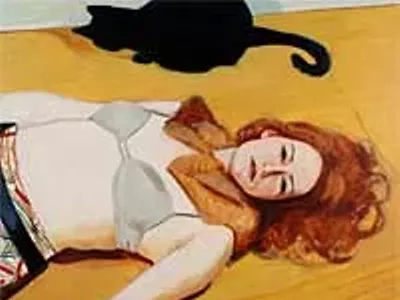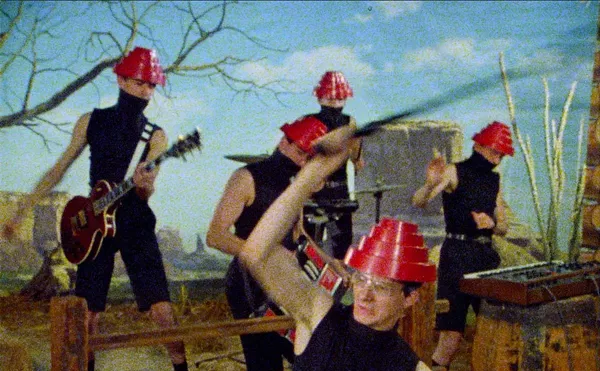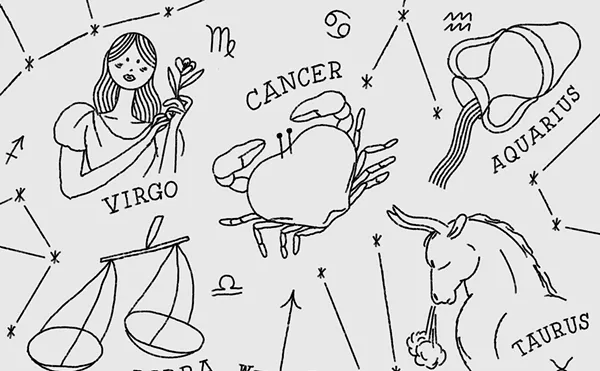"If I had a dollar for every person who has come up to me with a glass of wine in their hand and told me, 'I have a great case for you,' I would be a rich man," Santacroce says.
But Santacroce listened. And later he and his students researched the issue. What they found was a repeatedly recognized legal obligation based on treaties, codified in legislation, and reaffirmed by Congress and court decisions for the federal government to provide health insurance to all Native Americans.
On April 6, the U-M Clinical Law Program plans to file a class action suit in Federal District Court in Detroit on behalf of Native Americans living in this area. If successful, the suit would force the government to provide health care for them and set a legal precedent that could have ramifications for every Native American in the United States.
The statistics on the state of health care for American Indians are staggering.
According to the 2004 U.S. Commission on Civil Rights report "Broken Promises," compared to the general population Native Americans are more than seven times as likely to die from alcoholism, more than six times as likely to die from tuberculosis, four times as likely to die from diabetes, nearly three times as likely to die from accidents, and 52 percent more likely to die from pneumonia or influenza. They have the poorest cancer survival rates of any racial group. The American Indian poverty rate is three times the national average and their life expectancy is 71, nearly five years less than the rest of the U.S. population.
As a result of federal assimilation initiatives, nearly two-thirds of the 4.1 million Native Americans now live in urban areas. In metropolitan Detroit, there are more than 38,000 Native Americans, as many as 27,000 without health insurance. Despite this, by far the largest proportion of the budget of the federal Indian Health Services is spent on Indian reservations. These inequities exist in the face of the government's promises to provide health care to all Native Americans.
There is one federal government-funded health care clinic to care for the 38,000 Native Americans in southeast Michigan. It provides basic medical care and outpatient programs for such health issues as substance abuse. But by the admission of its own director, it's not comprehensive. And it's not free. Patients pay according to a sliding scale based on income.
"Really, nothing is free," says Lucy Harrison, Director of the American Indian Health and Family Services of Southeast Michigan on Lawndale, near Michigan and Lonyo. "There is no longer a free clinic. The Indians who come here are the sickest and the poorest in southeast Michigan. Those people who don't have a dime in their pocket, of course, we have to write that off."
Those who need more than basic services are referred to specialists where they often are faced with costs they have no way to meet.
"They're in a boat with no oars — absolutely," Harrison says. "You can make referrals all you want, but if there's no money — that's what the problem is. Yet the law said that we would provide health and education."
American Indians are adamant that they do not want charity. They want justice. Indians ceded or were forcibly removed from more than 400 million acres of their land.
"This is our land; this is our home," says Fay Givens, executive director of American Indian Services Inc., an Indian support group based in Lincoln Park.
"We gave up 95 percent of our land with guns at our heads. In return there were very few things the government was obligated to do, most of which they have never done. They have never honored their treaties. We do not feel that they want us to live."
Harrison says that this concept is especially relevant in the Detroit area.
"We were the first people in the nation here," she adds. "When Cadillac rowed that boat up, this was our territory."
There are also social and cultural barriers in place that contribute to health care disparities. Indians were actively at war with the United States for most of the 19th century and efforts to wipe out Native Americans and their traditions, beliefs and culture were very nearly successful. Is it really surprising that they remain wary of the government and its programs?
In the late 1940s, the federal government began what is called the Bureau of Indian Affairs Relocation Program, moving Indians off reservations and into urban settings. In the early 1950s, Congress increased funding and enhanced the program. Participants received two years of benefits for either on-the-job or vocational training. The program continued through the 1970s.
While some argued that the program put Indians on the road to independence, others argued that it forced Indians from their homes and did not improve their living conditions.
"They moved half the Indian people in America into the cities," says Givens. "It was a social experiment to assimilate us and clearly it hasn't worked."
McGowan is Givens' sister. She serves as a staff anthropologist for the National Urban Indian Coalition. She represents American Indians at the United Nations through the National Indian Youth Council and is a member of the National Indian Health Care Advisory Board.
She and Givens were born in Mississippi and are members of the Choctaw Mississippi Band. They grew up in Detroit. McGowan says that Indians don't want to be assimilated.
"We don't want in," she says. "We don't want to adopt what the mainstream sees as priorities. We have our own priorities — our families, religion, generosity. We cling tenaciously to our own values. We are who we are and we do not want to become part of the mainstream. It's insulting to us to become part of the melting pot."
What Indians have encountered is a continuing cycle of poverty and racism. According to the Commission on Civil Rights report:
"Persistent discrimination and neglect continue to deprive Native Americans of a health system sufficient to provide health care equivalent to that provided to the vast majority of Americans. ... Unfortunately, in this country, race matters when it comes to medical treatment. ... Studies show that people of color are less likely to receive certain medical procedures. Much of the unfair treatment and mistreatment stems from deeply rooted social inequities."
Those inequities in southeast Michigan would be largely addressed if the U-M Clinical Law Program lawsuit is successful. The suit would require the federal government to provide comprehensive health care for Detroit-area Indians without cutting funds for reservation-based health clinics. A successful ruling could no doubt set a precedent that would lead to increased funding for urban Indians across the United States.
The U-M Clinical Law Program is bringing the suit on behalf of the class and four named plaintiffs, three Native Americans and American Indian Services.
"The federal government made promises and, as their very own document says, they broke those promises," Santacroce says. "The government made a pact with these communities, in exchange for the surrender of their lands, to take care of them. And they are not doing it."
The Commission on Civil Rights, established by Congress in 1957, does, in fact say that. In "Broken Promises" the commission wrote:
"The federal government has a special relationship with Native Americans, commonly referred to as a 'trust' relationship, requiring the government to protect tribal lands, assets, resources, treaty rights, and health care, among other obligations. ... This health care obligation requires the government to provide medical treatment to all Native Americans living in the United States."
Indian Health Services, the federal agency under the Department of Health and Human Services that is charged with providing health care to American Indians, would not disagree either. While the agency's Web site states that health care is not an entitlement, an IHS official says there is both a moral and legal obligation to provide it.
"I think there's definitely a moral obligation," says Diane Dawson, public affairs specialist at IHS in Washington. "I know what you're asking and certainly our answer is that there is a legal obligation."
Dawson says that the reason health care for American Indians is inadequate is simple: It is not well enough funded.
"No, not to meet the needs," she says. "I think it's pretty well understood that it's not, but we do the best we can with what we've got and we appreciate everything we get."
But a good effort is not good enough, Santacroce says.
"I don't doubt that any individuals within IHS and in the government are doing their best to deliver medical services," he says. "The point is that their best is legally insufficient and that sits at their doorstep. When the law requires the government to do something, they have to do something. 'We don't have the money' is not a defense. It's as simple as that."
Santacroce says that while there have been a handful of cases on the subject of Native Americans' health care brought in the United States and that the government has raised the issue of limited resources as a defense, the issues raised in those cases were different from this one. He says that no one has ever filed a lawsuit matching the scope, reach or specific grounds of the one being filed in Detroit.
In a back-lot building at American Indian Services on Southfield Road in Lincoln Park, washers and driers, a couple of stoves and a television set sit waiting for pickup by those in need of them. Just after midday, a generous baker arrives with a donation: Dozens of loaves of bread and cartloads of assorted baked goods. According to McGowan, everything will be distributed to those in need before the end of the day.
"Urban Indian Centers are really the end of the line for Indian people," she says. "When you're homeless and you've lost your job and your house, you would come into an organization like ours and we would link you up with the organizations that can help you."
Givens says that health care for American Indians is poor across the board, but it is better on reservations. That provides a limited opportunity for some.
"We have a lot of cases where individuals have severe health problems and our Indian health clinic in Detroit has a limited array of services," she says. "We would have to send these folks back to their home reserves. Some of them have to wait six months, a year, two years — every tribe is different — to re-establish their residency before they get health care. Some of them die before they establish their residency.
"The federal government moved us to these cities. They moved us here and now they're not providing for us. We gave up our land. In return, this was one of the things they were supposed to do. We were supposed to be their wards — their children that they take care of. They don't take care of us."
For Native Americans, it is both an issue of discrimination and of survival.
"We're living in a hostile environment," Givens says. "It never, never ends. You see people wearing Chief Wahoo T-shirts. The sports teams with Indian nicknames. We are the last people who still have that ax to grind."
"Most people don't get up in the morning and think about extinction," McGowan says. "The Iowa tribe has 119 people. The happiest event in their lives is when a baby is born, because that means they might survive. There is nobody else in America that gets up in the morning and thinks about extinction. We think about will we be here four generations or five generations from now. Will we and can we exist? Our survival may be riding on this ability to get health care. That's the way we're looking at this."
For Santacroce, it is an issue of making the federal government do what he believes it is obligated to do.
"You can't give someone a peanut and say you're feeding him," he says. "The fact is that for many people in this community, there is no health care. There is no peanut. And the government has an obligation. And maybe they prefer that it go away. Well, most people who make promises and then break them feel that way. It doesn't mean the promise goes away."
See Also:
Bush pushby Tom Schram
President seeks to eliminate funding for urban Indian health clinics. Day by day
by Tom Schram
An ailing man's uncertain future. Tonya's ticking bomb
by Tom Schram
Health hopes pinned on lawsuit. Freelancer Tom Schram is co-chair of the National Writers Union of Southeast Michigan. Send comments to [email protected]






